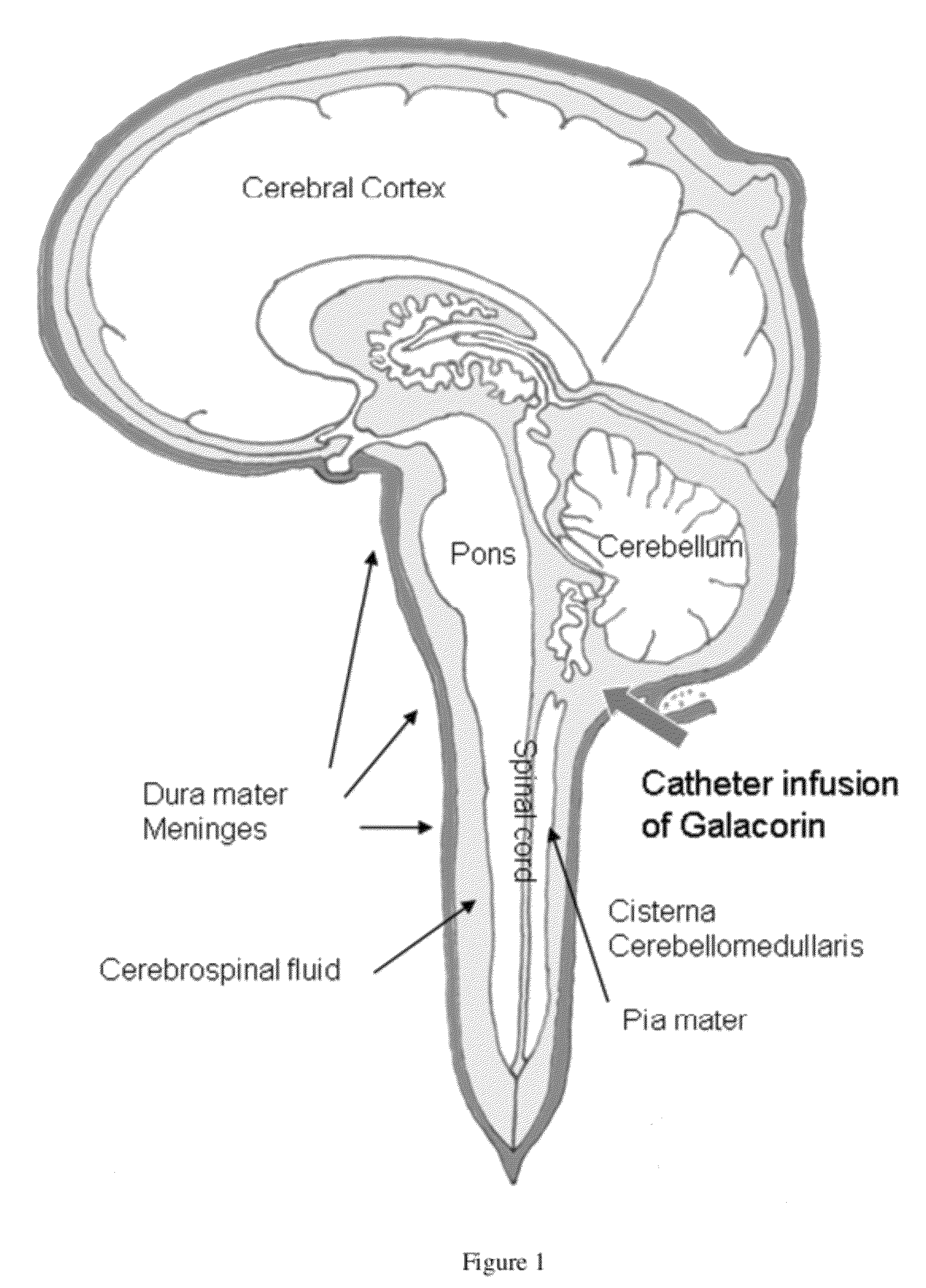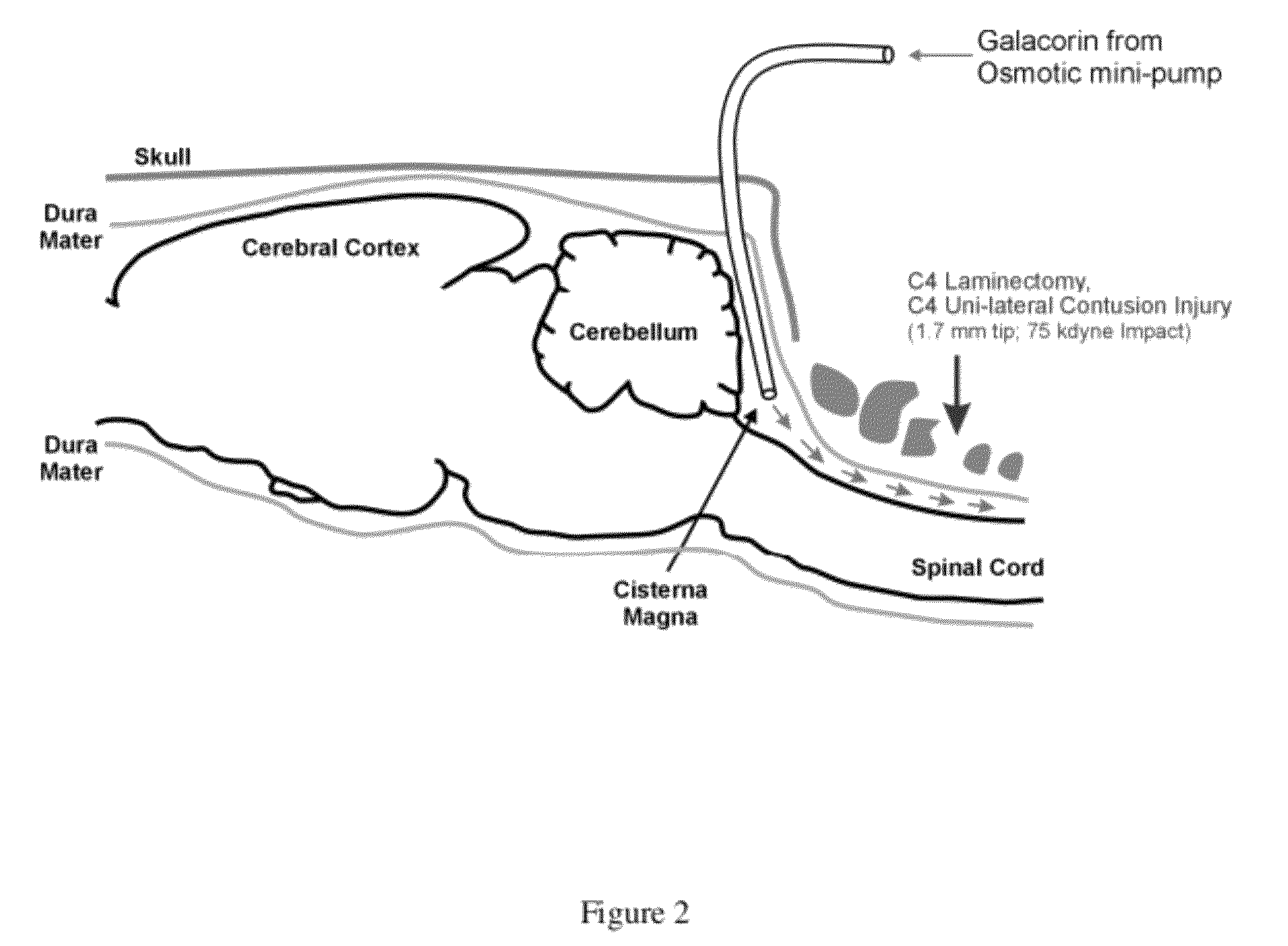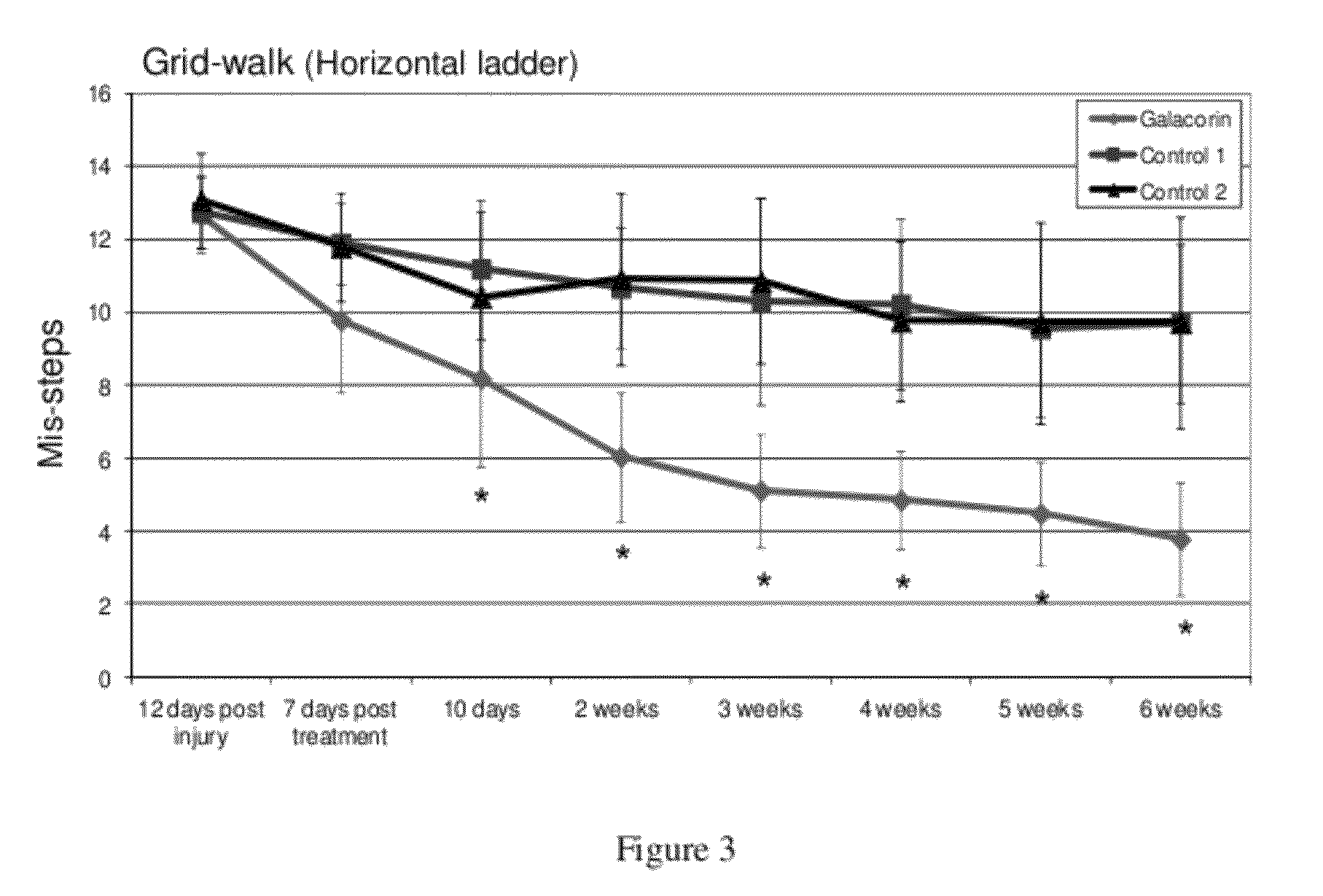Methods for treating neurological conditions and compositions and materials therefor
a neurological condition and composition technology, applied in the field of neurological functional recovery, can solve the problems of muscle weakness, lack of coordination, pain, substantial challenges in tissue repair attempts, etc., and achieve the effects of neurological function recovery in the patient, and increased neuronal dendrite extension
- Summary
- Abstract
- Description
- Claims
- Application Information
AI Technical Summary
Benefits of technology
Problems solved by technology
Method used
Image
Examples
example 1
[0059]This example demonstrates the effect of treatment with decorin in accordance with the present invention on the ability of rats with cervical spine injuries to cross a Grid-walk / Horizontal Ladder compared to untreated rats.
[0060]Human decorin core protein, GALACORIN™ was tested in a delayed (sub-acute) treatment protocol for adult rats with cervical spinal cord injuries. Experimental spinal cord injuries were conducted using a computer controlled Infinite Horizon (IH) Impactor device (Precision Systems and Instrumentation, LLC) to generate a moderately severe unilateral contusion injury at the cervical (vertebral levels C4-C5; right sided unilateral contusion; tip diameter of 1.7 mm; 75 kdyne force; Displacement 1.1 mm) level of the spinal cord in adult Sprague Dawley rats (three-month old females). Beginning at a time point of twelve days after spinal cord injury, spinal cord injured rats (n=9) were treated with GALACORIN™ using the novel treatment paradigm where GALACORIN™ wa...
example 2
[0064]This example is a CatWalk analysis of locomotor recovery of decorin treated spinal cord injured rats compared to non decorin treated (control) spinal cord injured rats. Comparison of treated and untreated animals with biotinylated dextran amine (BDA) labeling of spinal cord tissues was also conducted. Automated quantitative gait analysis was performed for all experimental groups using the CatWalk XT system (Version 8.1, Noldus Information Technology, Leesburg, Va., USA). The CatWalk system has been previously described in extensive detail (F. P. Hamers, et al. CatWalk-assisted gait analysis in the assessment of spinal cord injury. J. Neurotrauma 23, 537-548 (2006)). The system hardware consists of a translucent illuminated glass walkway under which a video camera (Fujinon Corporation, Japan) records the rats' paw prints as they cross the walkway. CatWalk data acquisition and analyses were carried out by individuals that were blinded with respect to treatment groups. Three runs...
example 3
[0081]This example illustrates the effect of decorin administration in accordance with the present invention at varying time points (time=0, 12 days, 1 month) after injury on performance of spinal cord injured rats in a GridWalk analysis.
[0082]The benefits of intrathecal infusion of decorin to the cisterna magna of adult rats with unilateral contusion injuries at the C4 / C5 cervical spinal levels was analyzed. This analysis started either immediately after injury or 1 month after injury using comparable animal numbers per experimental groups and identical infusion, surgical and GridWalk / Horizontal Ladder behavior testing protocol as described for the results obtained of decorin infusion at 12 days post spinal cord injury. As shown in FIG. 5 there were robust reductions in numbers of mis-steps for rats crossing the Horizontal Ladder for all decorin treated rats compared to untreated control spinal cord injured rats that received a cannula alone to the cistern magna but no decorin infu...
PUM
| Property | Measurement | Unit |
|---|---|---|
| chronic time points | aaaaa | aaaaa |
| chronic time points | aaaaa | aaaaa |
| time | aaaaa | aaaaa |
Abstract
Description
Claims
Application Information
 Login to View More
Login to View More - R&D
- Intellectual Property
- Life Sciences
- Materials
- Tech Scout
- Unparalleled Data Quality
- Higher Quality Content
- 60% Fewer Hallucinations
Browse by: Latest US Patents, China's latest patents, Technical Efficacy Thesaurus, Application Domain, Technology Topic, Popular Technical Reports.
© 2025 PatSnap. All rights reserved.Legal|Privacy policy|Modern Slavery Act Transparency Statement|Sitemap|About US| Contact US: help@patsnap.com



